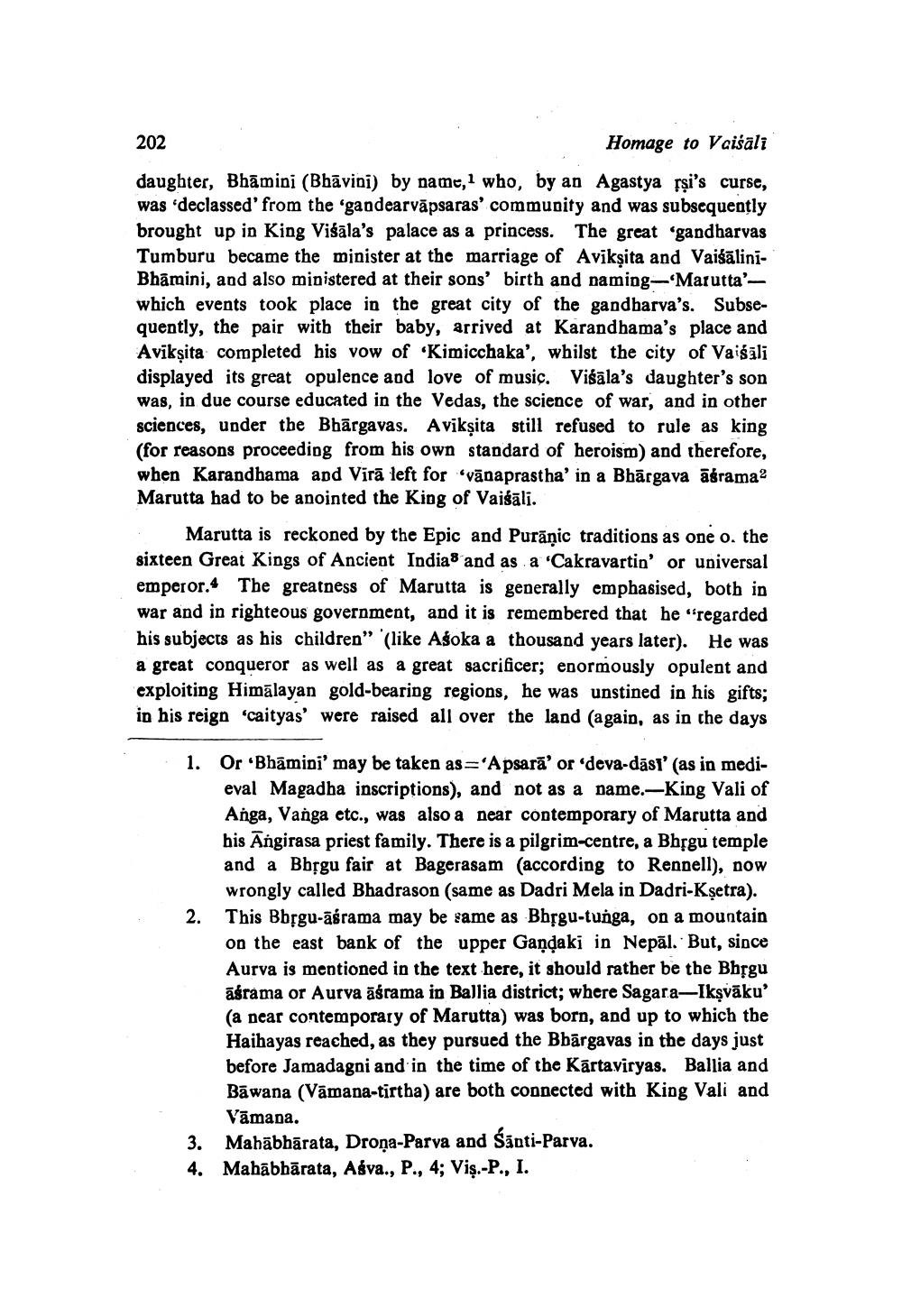________________ 202 Homage to Vaisali daughter, Bhamini (Bhavini) by name, who, by an Agastya ssi's curse, was 'declassed' from the 'gandearvapsaras' community and was subsequently brought up in King Visala's palace as a princess. The great "gandharvas Tumburu became the minister at the marriage of Aviksita and VaisaliniBhamini, and also ministered at their sons' birth and naming-Marutta'which events took place in the great city of the gandbarva's. Subsequently, the pair with their baby, arrived at Karandbama's place and Aviksita completed his vow of Kimicchaka', whilst the city of Vaisali displayed its great opulence and love of music. Visala's daughter's son was, in due course educated in the Vedas, the science of war, and in other sciences, under the Bhargavas. Aviksita still refused to rule as king (for reasons proceeding from his own standard of heroism) and therefore, when Karandbama apd Vira left for vanaprastha' in a Bbargava agrama2 Marutta had to be anointed the King of Vaisali. Marutta is reckoned by the Epic and Puranic traditions as one o, the sixteen Great Kings of Ancient India8 and as a 'Cakravartin' or universal emperor. The greatness of Marutta is generally emphasised, both in war and in righteous government, and it is remembered that he "regarded his subjects as his children" (like Asoka a thousand years later). He was a great conqueror as well as a great sacrificer; enormously opulent and exploiting Himalayan gold-bearing regions, he was unstined in his gifts; in his reign 'caityas' were raised all over the land (again, as in the days 1. Or *Bhamini' may be taken as='Apsara' or 'deva-dasi' (as in medi eval Magadha inscriptions), and not as a name.-King Vali of Anga, Vanga etc., was also a near contemporary of Marutta and his Angirasa priest family. There is a pilgrim-centre, a Bhrgu temple and a Borgu fair at Bagerasam (according to Rennell), now wrongly called Bhadrason (same as Dadri Mela in Dadri-Ksetra). 2. This Borgu-asrama may be same as Bbsgu-tunga, on a mountain on the east bank of the upper Gandaki in Nepal. But, since Aurva is mentioned in the text here, it should rather be the Bhtgu asrama or Aurva asrama in Ballia district; where Sagara-Iksvaku' (a near contemporary of Marutta) was born, and up to which the Haihayas reached, as they pursued the Bbargavas in the days just before Jamadagni and in the time of the Kartaviryas. Ballia and Bawana (Vamana-tirtha) are both connected with King Vali and Vamapa. 3. Mahabharata, Drona-Parva and Santi-Parva. 4. Mahabharata, Asva., P., 4; Vis.-P., I.




